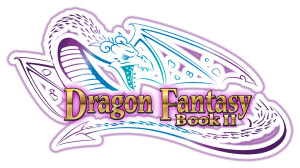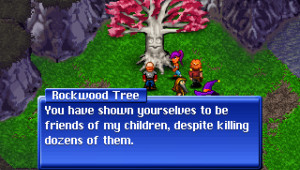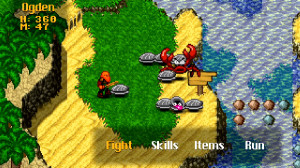The early-era JRPG has happily become a resilient genre in recent years. Not only has Square Enix greatly benefited from plentiful re-releases of their earlier titles, but now a number of indie developers are returning to the genre that helped them fall in love with video games in the first place. Dragon Fantasy Book II is successful in reflecting many of the faces that nostalgic gamers will remember from the glory Super Nintendo days, but is less successful in capturing the heart, focus, and polish that made games like Chrono Trigger and Final Fantasy VI the lasting examples of the genre that they have become.
The most successful element of Book II is its visuals. The overworld, towns, heroes, enemies, and layout of the maps could be pulled directly from the best of the 16-bit era, even utilizing frills such as soft snowfall to great effect. The varied locales should be familiar to JRPG fans, but the graphics are realized with such love that it feels like a comfort to go through the adventure game location checklist, not a chore.
While certainly nowhere close to a failure, the rest of the game’s elements unfortunately do not live up to the visuals. It appears as though the developer, The Muteki Corporation, looked at what people loved about old SNES RPGs and tried to mimic it rather than analyzing the concepts and development principals that allowed those features to exist in the first place. Admittedly, the latter is a far more difficult task, and the fact that Dragon Fantasy Book II is not the next Chrono Trigger is not a strike against it so much as a warning to gamers who might have rather unfair high hopes upon seeing such nostalgia-rich footage.
While drawing obvious inspiration from its ancestors, Book II‘s gameplay is largely enjoyable and engaging for its own merits. Battles take place without a scenery transition, much like Chrono Trigger, and therefore placement and area of effect attacks play a significant role in battle. While there is no way to control placement of heroes or enemies, there is an element of strategy present which insists that the player must decide which attacks or spells the heroes should use that are most effective for the situation without being wasteful with their precious magic points.
In addition to in-battle strategy, Book II offers monster capture for when the primary party members are not all together. The feature is functional, but unremarkable. Gamers will be happy to fill their roster for the times when it empties out, but will likely not think too much about it otherwise, except perhaps when sidequests call for it.
And sidequests are plentiful, if not a little bland and occasionally confusing, owing in part to an interface that feels notably clunky. While the retro style of the menus is welcomed, it is disappointing that a larger effort was not taken to make the experience more user friendly. Additionally, after witnessing a number of typos throughout the experience, the interface will unfortunately begin to feel lazy instead of retro.
This clunky feeling carries over to the slow speed and occasional confusion of the battle screen. Enemy info is frustratingly only displayed when the party is accidentally engaged with an off-screen enemy. Also, the selection cursor is a little unclear, especially with only two enemies remaining. It feels as though the smallest amount of polish could have solved some of these issues, including something like the addition of a few more navigational sound effects.
Despite it being obvious that events of Book II are being picked up in the middle of a longer story, gamers who start with Book II will not feel lost, and that is a commendable feat. The dialogue is generally light-hearted and filled with the sort of knowing tone that will make any long-time RPG fan feel like their love is understood and shared by others. More dramatic elements are handled with the same sort of begrudging competence that has long been the case in the gaming world. The ideas and character arcs are genuine, but the proper deftness needed in both writing and theme cultivation are not present enough to drive anything too close to the player’s heart.
Similar observations can be made about Dragon Fantasy Book II‘s soundtrack. While it is unfair to compare anybody to Nobuo Uematsu, it is worth noting that his legendary soundtracks made an impact not only for hosting beautiful, fitting melodies, but because the music felt like it was born from the game’s world, therefore giving a cohesive narrative that became as important to the accompanying game’s story as its plot. Dragon Fantasy Book II has a pleasant soundtrack with competent tunes written in the general style of classic Super Nintendo RPGs, but like the rest of Book II, it feels primarily like an homage and so it leaves no lasting impression.
Dragon Fantasy Book II is a charming title that has its fair share of both delightful highlights and clunky lowlights, but it ultimately serves as a comforting step back to a time when RPG gamers could lose themselves in 16-bit fantasy adventures.
Full disclosure: the author was provided with a free copy of the game for review purposes.


